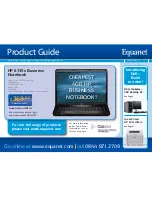
SCSI Controller,
Continued
SCSI Bus
Signals
Table 1–8 describes the SCSI bus signals used by the SCSI
controller.
Table 1–8 SCSI Bus Signals
Bus Signal
Description
DB7..0 and DBP
An 8-bit parallel data bus with an associated odd parity bit. The
use of the parity bit is optional but strongly encouraged. These
lines may be driven by either an initiator or a target, depending
upon the direction of data transfer.
RST
Signals all devices on the SCSI bus to reset to their initial power-
on states. Thereafter, it should be asserted only as a last resort
during error recovery since it indiscriminately affects all devices on
the bus. An RST signal generated by some other device on the bus
causes an internal reset of the 53C94 chip used in this controller
and sets the interrupt request bit (INT in register SCS_STATUS).
BSY and SEL
Used by initiators and targets during the arbitration, selection,
and reselection bus phases to establish or resume a logical
connection between an initiator and a target. Once the connection
is established, the target asserts BSY and the SEL signal is not
driven..
ATN
Used by an initiator to signal a target that it has a message ready.
The target can receive the message by entering the "message out"
phase. ATN is always driven by an initiator.
REQ and ACK
Used to synchronize information transfers over the data bus during
any of the six information transfer phases. REQ is always driven
by the target, ACK is always driven by the initiator.
C/D, I/O and MSG
Collectively indicate one of six possible information transfer phases.
These signals are always driven by the target device.
1–32
















































